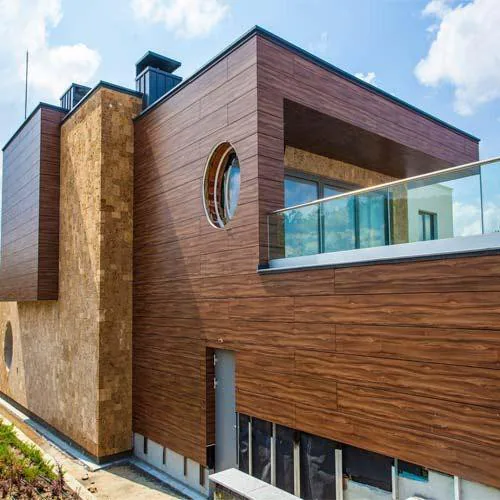The Exterior Cladding options of a building plays a crucial role in not only protecting it from the elements but also defining its aesthetic appeal. In recent years, architectural trends have shifted towards modern and innovative designs, incorporating cutting-edge materials that offer both functionality and style. Let’s delve into some of the most prominent exterior cladding trends that are shaping the landscape of modern architecture.
Sustainable Materials
Sustainability has become a top priority in the construction industry, and the same ethos extends to exterior cladding. Builders and architects are increasingly turning to sustainable materials that minimize the environmental impact of construction while providing long-term durability. Bamboo, reclaimed wood, recycled metal panels, and even biodegradable materials are gaining popularity for their eco-friendly properties. These materials not only reduce carbon footprint but also add a distinct touch of natural beauty to the building’s exterior.

High-Performance Metal Panels
Metal cladding has been a favourite for many years, but recent advancements in technology have taken it to a whole new level. High-performance metal panels, such as zinc, copper, and titanium, offer exceptional weather resistance and are known for their low maintenance requirements. Moreover, they can be easily moulded into various shapes, enabling architects to explore innovative and dynamic designs that were previously unattainable.
Composite Cladding
Composite cladding materials have witnessed a surge in popularity due to their versatility and aesthetic appeal. These materials typically combine wood, plastic, and various additives to achieve a balance of durability and visual appeal. Composite cladding comes in an array of colours and finishes, offering an authentic wood-like appearance without the associated maintenance issues. Its resistance to rot, mould, and pests makes it an attractive choice for modern constructions.
Textured Finishes
Texture plays a crucial role in modern exterior cladding design. Architects are now experimenting with different textures to add depth and visual interest to buildings. Textured finishes like stone cladding, brick slips, or even 3D tiles create captivating facades that are both visually appealing and unique. These textures can be employed to highlight specific architectural elements or to create a sense of harmony with the natural surroundings.

Digital Printing on Cladding
Advancements in technology have opened up new possibilities for customizing exterior cladding. Digital printing on cladding materials allows architects and designers to incorporate intricate patterns, images, or even artwork directly onto the building’s facade. This level of personalization enables buildings to become works of art, reflecting the culture and identity of the community they serve.
Green Walls and Vertical Gardens
Living walls or green facades have become a hallmark of sustainable architecture. Integrating vertical gardens into exterior cladding not only provides insulation and improves air quality but also creates a striking visual statement. These green installations add a touch of nature to urban environments and contribute to the overall well-being of occupants.
Glass Cladding
Glass cladding has been a staple in modern architecture, offering transparency and a sense of openness. Recent trends have seen advancements in glass technology, including energy-efficient coatings and smart glass that can adjust transparency based on external conditions. This allows for more sustainable and dynamic building designs that respond to the environment and occupants’ needs.

Conclusion
In conclusion, exterior cladding trends in modern architecture are witnessing a remarkable shift towards sustainability, innovation, and personalization. With a growing emphasis on eco-friendly materials, advanced technologies, and imaginative designs, buildings today are not only functional but also works of art. These trends are not just shaping the external appearance of structures but also influencing how we interact with and perceive the built environment. As the world continues to evolve, it is exciting to see how these trends will further transform the landscape of architecture in the years to come. For more information about exterior cladding read our blog What is exterior cladding.

